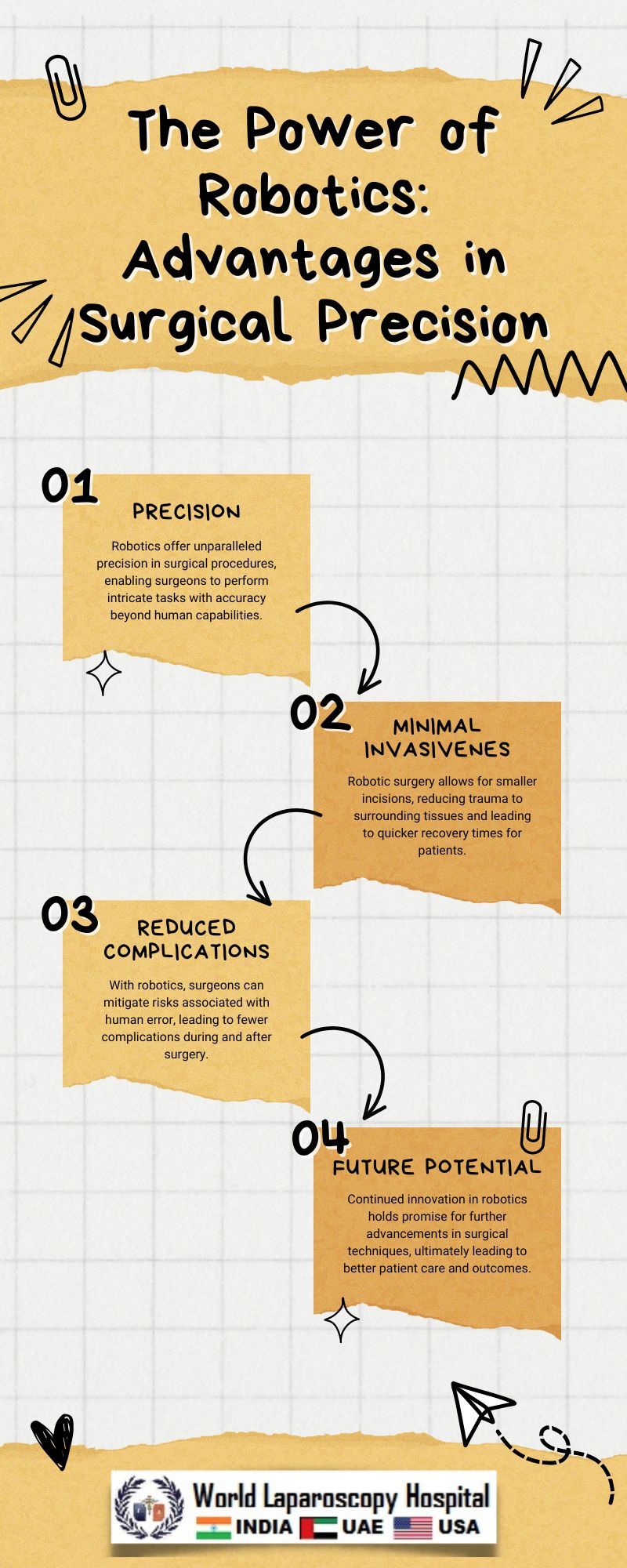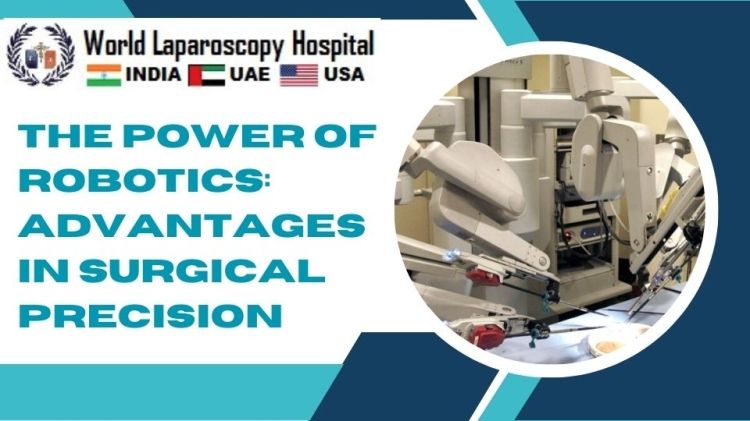The Power of Robotics: Advantages in Surgical Precision
Introduction:
In the realm of modern medicine, the integration of robotics into surgical practices has transformed the landscape of patient care. With unparalleled precision and advanced technology, robotic systems have become indispensable tools for surgeons around the world. This article explores the profound impact of robotics on surgical precision, detailing the advantages, challenges, and future implications of this revolutionary technology.

Advantages of Robotic Surgery:
Robotic surgery offers several distinct advantages over traditional surgical approaches. One of the primary benefits is enhanced precision. Unlike human hands, robotic arms can make precise, controlled movements with sub-millimeter accuracy, reducing the risk of errors and complications during surgery. This precision is particularly advantageous for delicate procedures in areas such as neurosurgery, cardiac surgery, and microsurgery.
Another advantage of robotic surgery is improved visualization. Robotic systems are equipped with high-definition cameras and magnification capabilities, providing surgeons with a clear, magnified view of the surgical site. This enhanced visualization allows for better identification of anatomical structures, precise tissue dissection, and more accurate placement of sutures and implants.
Furthermore, robotic surgery enables minimally invasive procedures, also known as keyhole surgery. Unlike traditional open surgery, which requires large incisions, robotic surgery utilizes small incisions through which miniature instruments and a camera are inserted. This approach minimizes trauma to surrounding tissues, reduces postoperative pain, and accelerates recovery times. Patients undergoing robotic surgery often experience shorter hospital stays and quicker return to normal activities compared to those undergoing traditional surgery.
Additionally, robotic surgery offers improved ergonomics for surgeons. Traditional surgical techniques can be physically demanding, leading to fatigue and musculoskeletal injuries over time. Robotic systems are designed to provide ergonomic support, allowing surgeons to operate comfortably for extended periods without experiencing fatigue or discomfort. This ergonomic advantage enhances surgical performance and reduces the risk of surgeon burnout.
Challenges and Limitations:
Despite its numerous advantages, robotic surgery also presents challenges and limitations. One of the primary challenges is the high cost associated with robotic systems. The initial investment in purchasing and installing robotic equipment, along with ongoing maintenance and training expenses, can be substantial. As a result, access to robotic surgery may be limited in certain healthcare settings, particularly in resource-constrained regions.
Another challenge is the learning curve associated with mastering robotic surgical techniques. While robotic systems offer advanced technology and intuitive interfaces, surgeons require specialized training and practice to become proficient in using these devices. The transition from traditional surgery to robotic surgery may necessitate additional time and resources for training, potentially impacting surgical workflow and efficiency.
Moreover, robotic surgery has limitations in certain clinical scenarios. Complex procedures requiring intricate manual dexterity or tactile feedback may pose challenges for robotic systems, as they rely on indirect manipulation and lack the sense of touch inherent in human hands. Additionally, technical issues such as system malfunctions or software glitches can occur during surgery, necessitating prompt troubleshooting and potentially delaying the procedure.
Future Implications:
Despite its challenges, the future of robotic surgery is promising, with ongoing advancements in technology and research. Emerging technologies such as augmented reality, artificial intelligence, and haptic feedback hold the potential to further enhance the capabilities of robotic systems and overcome existing limitations.
Augmented reality systems can provide surgeons with real-time, three-dimensional visualization of the surgical field, overlaying virtual information onto the patient's anatomy for improved guidance and precision. Artificial intelligence algorithms can analyze preoperative imaging data and intraoperative feedback to assist surgeons in decision-making and procedural planning, optimizing outcomes and reducing complications.
Furthermore, haptic feedback systems aim to recreate the sense of touch in robotic surgery, allowing surgeons to perceive tissue characteristics and manipulate instruments with greater tactile sensitivity. By integrating these advanced technologies into robotic platforms, surgeons can perform even more complex procedures with enhanced precision and safety.
In addition to technological advancements, the future of robotic surgery will also be shaped by broader trends in healthcare delivery and patient care. The increasing demand for minimally invasive procedures, driven by patient preferences for faster recovery and reduced scarring, will continue to fuel the adoption of robotic surgery across various specialties.
Moreover, the rise of telemedicine and remote surgery has the potential to extend the reach of robotic surgery to underserved communities and remote regions, where access to specialized surgical care is limited. By leveraging teleoperated robotic systems and high-speed telecommunications networks, surgeons can perform procedures from distant locations, providing expert care to patients in need.
Conclusion:
Robotic surgery has revolutionized the field of surgery, offering unparalleled precision, improved patient outcomes, and enhanced surgical capabilities. Despite its challenges and limitations, the continued development of robotic technology and the integration of advanced techniques hold the promise of further advancing the field of robotic surgery in the years to come. As robotic systems become more sophisticated and accessible, they will continue to play a pivotal role in shaping the future of surgical practice and healthcare delivery worldwide.


